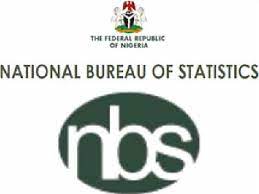The National Bureau of Statistics (NBS) at the weekend disclosed that it had commenced the Nigeria Labour Force Survey (NLFS) and Nigeria Living Standards Survey (NLSS) exercise nationwide and solicited the public support for the surveys.
The Statistician-General of the Federation/NBS’ CEO, Prince Adeyemi Adeniran, who disclosed this during the National Sensitisation workshop for the NLSS and the NLFS last Thursday in Abuja, said while the field work for collection of data for NLFS had commenced, that of NLSS would commence the following day in all the 36 states and the Federal Capital Territory (FCT).
He recalled that in 2020, NBS announced the results of the 2018/19 Nigeria Living Standards Survey (NLSS), which provided the first official estimates of poverty and welfare in Nigeria, since 2010.
The Statistician-General explained: “Here we are today, sensitising the public on the conduct of yet another Nigeria Living Standards Survey, commonly called the NLSS, and the newly enhanced Nigeria Labour Force Survey, (NLFS).
“As many of you know, in 2020, NBS announced the results of the 2018/19 Nigeria Living Standards Survey (NLSS), which provided the first official estimates of poverty and welfare in Nigeria, since 2010.
“The report recorded a headline national poverty rate of 40.1 percent, and collected detailed information on household consumption, education, health, employment, housing conditions, and other key non-monetary indicators of welfare.
“The survey was conducted over a 12-month period to capture seasonality in household consumption expenditure. It was adjudged to be one of the best quality surveys to be conducted by the Bureau and its results were widely accepted and acknowledged both locally and internationally”, Adeniran added.
He, however, clarified that the latest round of the NLSS was a follow-up to the previous one as a way of keeping pace with the expected 4–5-year frequency.
On the importance of the NLFS exercise, Adeniran pointed out that the NLFS remained a strategic survey designed to collect and analyse labour market statistics for the country, including the generally understood and widely anticipated headline unemployment and underemployment rates.
He clarified: “While the unemployment and underemployment rates are very important figures that indicate the number of persons economically engaged, the NLFS contains a lot more equally interesting and important information that offer useful insight into the health of the labour market in Nigeria.
“Over the past year and a half, staff of the Bureau have been engaged with colleagues from the World Bank in an extensive planning and preparation process, for both the NLSS and NLFS surveys”, he added
According to him, the major change to this round of the NLSS is the use of newly carved out digital enumeration area maps from the National Population Commission, for the selection of Clusters and subsequent household listing and the addition of new questions and modules on Remittances, Migration and Absentee Household members, Migration Aspiration, Social Cohesion, Petrol Subsidy, and Subjective well-being to the NLSS survey questionnaire.
On the NLFS, Adeniran noted that the survey had recorded more significant changes from the way it was being implemented previously, noting that aside the use of the digital Enumeration Area maps mentioned earlier, with a fresh quarterly listing of selected Clusters to avoid attrition, this new approach involves data collection from a carefully selected sample of over 35,000 households, spread over a period of 12 months, instead of the large 33,000 sample surveyed every quarter.
He further expatiated: “It also involved the use of a streamlined workforce and an enhanced quality assurance mechanism, enabled by technology, built into the process. Additionally, new questions on persons employed but not at work, long-term unemployment, Job satisfaction, discouraged job seekers, and information on decent work, are all included in the revised instrument.
“This new method of continuous data collection for the NLFS, will now produce headline national estimates of unemployment and other interesting labour force data, using the new hourly definition of 1 hour a week.
“While fully disaggregated state-level estimates will be generated at the end of 12-months of data collection. With this new concept and approach of conducting the NLFS, Nigeria will not only be setting a new standard in Africa for the conduct of the Labour Force Survey, but more importantly, we will be introducing a mechanism that will allow for the sustainable and uninterrupted reporting of labour market statistics in Nigeria, eliminating the observed gaps that usually plagued the old approach.
“This is a major deal for the country, as we will be ensuring that government and indeed the public, always has reliable information on the health of the labour market, to support all the laudable initiatives and programs designed to boost employment generation in Nigeria.
“Both of these surveys have been Pretested and Piloted, each in 6 selected states in each of the geo-political zones in the country, to ensure readiness for full implementation. Extensive training for the field personnel for both surveys has also been conducted, with adequate field practical and testing of the personnel for suitability and for preparedness for the exercise”, the Statistician-General added.






